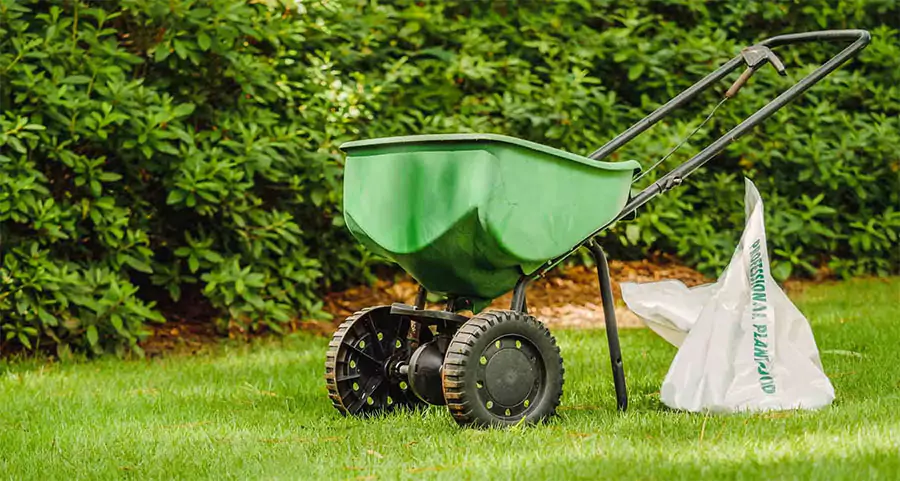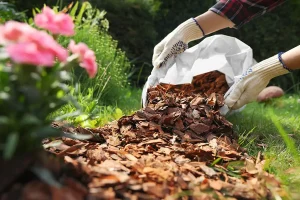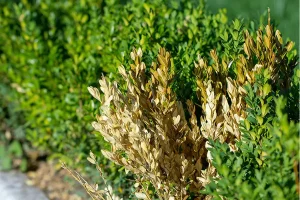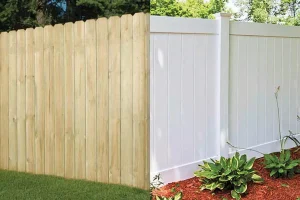Hey there, Prosper neighbors! We know summer in North Texas can be a wild ride—scorching sun one minute, surprise storm the next. When it comes to getting that lush, green lawn you’ve been dreaming of, the big question usually pops up: Should I go with sod or seed?
As a trusted summer landscaping company in Prosper, Stonebridge Lawn and Garden has seen it all—patchy yards that just won’t fill in, sod that doesn’t take, and folks wasting time (and money) on the wrong choice for their lawn.
The truth is, there’s no one-size-fits-all answer. It depends on your timeline, your budget, and how much TLC you’re willing to give your yard once the temps start climbing. Today, we’re discussing the biggest mistakes we see homeowners make when choosing between sod and seed—and how you can avoid them like a pro. Let’s get your lawn summer-ready the smart way!
North Texas heat got your lawn looking a little crispy?
At Stonebridge Lawn and Garden, we’ve helped plenty of folks avoid common landscape mistakes and build outdoor spaces that truly bloom, without breaking the bank.
Your landscape design should fit your goals, whether you’re creating a cozy outdoor living space with a fire pit and native shrubs or building a low-maintenance backyard oasis with perennials and flagstone walkways. And it all starts with the right approach to lawn care.
Think of walking out your back door into a stunning outdoor space filled with native plants, a cozy fireplace, warm outdoor lighting, and a rich, green lawn that feels like a soft carpet under your feet, year-round. No more guessing, no more patch jobs.
Just a custom landscaping project that works for your lifestyle and climate. Neglecting to invest in professional landscaping could lead to the hidden costs of neglecting professional landscape design services, such as frequent repairs and wasted resources, which can quickly add up over time.
Ready to stop guessing and start growing? Let’s talk about what your Prosper, TX lawn needs this summer. Contact us at Stonebridge Lawn and Garden today and let’s start transforming your outdoor space.
Understanding sod and seed options
At Stonebridge Lawn and Garden, we’ve helped a lot of folks in the town of Prosper figure out whether sod or seed is better for their yard. We look at things like the climate and soil, how fast someone wants results, and how much time they want to spend watering and mowing.
What are the primary differences between sod and seed for lawn installation?
Sod gives you a lawn almost right away. It’s already grown and just needs to be watered and kept healthy. It works great for a low-maintenance landscape design if you’re planning a patio or hardscaping and don’t want dirt everywhere.
Seed starts from scratch. It’s slower to grow and more work up front. One homeowner who wanted a functional outdoor space with landscape beds and landscaping plants tried seeding their side yard. It took time, but now their outdoor oasis is full of strong, healthy grass.
We help folks choose the right landscaping option by looking at their yard area, timeline, and budget.
How does the cost of sod compare to seeding in North Texas?
In North Texas landscapes, cost matters—especially during a hot Texas summer. Sod is more expensive at first. You’re paying for grass that’s already grown, plus the design and installation services to lay it out just right.
Seed is cheaper up front. But remember—you’ll need more water, time, and possibly lawn care help while it grows.
A family in Prosper chose seeds for their new landscape because they had a big yard and a smaller budget. They added native trees and shrubs and asked us for low-maintenance landscaping ideas. It took a season, but it worked out well.
What is the typical establishment time for sod versus seed?
Sod takes about 2–3 weeks to root if you water it right. That’s great for outdoor living projects that need quick results, like a patio with a fire pit or outdoor kitchen.
Seed can take 2–3 months to fill in. That means more waiting, more weeding, and more watering. In landscaping in North Texas, the hot sun can make this harder if you don’t stay on top of your watering schedule.
Which grass types are commonly used for sod and seed in North Texas?
In the North Texas landscape, we mostly use:
- Bermudagrass – loves sun, handles traffic, great for low-maintenance lawns.
- St. Augustine – works well in shady spots.
- Zoysia – good mix of looks and strength.
- Buffalograss – a solid pick for heat and drought, and part of low-maintenance landscape design.
For seeding, Bermudagrass is the top pick. It grows fast and does well in our hot summers. But remember, you can’t plant all grass types from seed—some are only sold as sod.
How do sod and seed options affect weed control during lawn establishment?
Sod blocks weeds better right away. Since the grass is already thick, there’s less space for weeds to pop up. In a professional landscape job we did in Prosper, TX, the client had zero weeds after we installed sod and a drip irrigation system.
Seed, on the other hand, leaves the soil open for weeds to grow. We always tell our clients: if you go with seed, you’ll need to keep an eye on the area. We recommend landscape design services that include a weed control plan while the grass is getting started.
We also help with landscaping plants and mulch in landscape beds to keep weeds out and bring in some natural beauty.
Regional considerations for North Texas lawns
Here’s what we’ve learned from our local projects and some real customer wins (and challenges!).
What are the best times of year to install sod or seed in Prosper, TX?
We always tell folks this: spring and early fall are the best times to lay sod or spread seed. That’s when it’s warm enough for the grass to grow but not so hot that it dries out too fast.
One homeowner in the Dallas area had us install Bermudagrass sod in April, just before the Texas summer kicked in. It rooted fast, and their outdoor living space was ready for grilling by Memorial Day.
Seeding in the fall? That’s usually the safer bet. The temps cool down, and there’s less stress on new grass. A family in Prosper tried seeding in September and saw their entire yard fill in by Thanksgiving.
How does the North Texas climate influence the success of sod and seed?
The North Texas climate is no joke—hot summers, sudden storms, and dry spells. All this can make lawn work tricky. Sod handles it better at first because it’s already grown. Seed? It needs extra care, especially with heat and wind.
We did a landscaping project last summer that included both sod and seeded spots. The sod held up great, but the seed needed more water and time.
Heat and drought are real challenges, so we always plan lawn jobs around weather forecasts—and we give every customer tips on watering, shade, and low-maintenance landscaping ideas.
Decided to revamp my lawn at my home on Oakwood Drive in Prosper, TX, but I quickly realized that the North Texas climate posed some serious challenges. The heat was intense, and the dry spells made it tough for the grass to establish itself.
I opted for a mix of sod and seed, hoping to get the best of both worlds. The sod took off well, since it was already grown and established, but the seeded areas struggled.
The seed needed much more attention, extra watering, and time to recover, especially with the heat and wind. I reached out to Stonebridge Lawn and Garden for advice, and they not only helped me adjust my watering schedule but also gave me helpful tips on shade and low-maintenance landscaping ideas to help the seed thrive.
With their expertise, I was able to work with the North Texas climate and get my lawn back to looking lush and healthy. – Emily, Oakwood Drive, Prosper, TX
Are there soil preparation differences when choosing between sod and seed?
Yep—there sure are.
With seed, we usually loosen the top 2 inches of soil and mix in compost. That helps the seeds stick, grow roots, and stay moist. If you skip this step, it’s harder for the seed to grow.
With sod, the ground has to be leveled out first. We also check for drainage issues and slope—this matters a lot in landscaping in North Texas, where clay soil can hold water.
What irrigation practices are recommended for new lawns in North Texas summers?
Watering is everything—especially when it’s 100°F outside.
For sod, we tell people to water twice a day for the first week, then slowly cut back. It helps the roots grow deep and strong. In one job, we used a drip irrigation system with a timer, and the grass came in strong without wasting water.
For seed, watering needs to be light and frequent—3 to 4 times a day until it sprouts. We tell our customers to use sprinklers or misters and never let the soil dry out.
Adding irrigation to your lawn plan is one of the best ways to protect your lawn during a tough Texas summer.
How do local water restrictions impact lawn establishment methods?
In Prosper and other towns nearby, we often run into local water restrictions, especially in late summer. That can make it harder to grow a new lawn, especially from seed.
We helped one homeowner with landscape design services who needed professional landscaping services and wanted sod during watering limits. We installed a smart irrigation controller and followed the city’s rules—watering only on allowed days and early in the morning. It worked!
If you’re dealing with restrictions, sod is usually a better bet than seed—it needs less watering time overall.
Last summer, I was dealing with the challenge of growing a new lawn on my property in Stonebridge Ranch, Prosper, TX. With local water restrictions in place, I found it nearly impossible to water as often as needed for seeds to properly establish.
After struggling for a few weeks, I reached out to Stonebridge Lawn and Garden for advice. They suggested using sod instead of seed, as it required less frequent watering, making it a better option under the current water restrictions.
They also installed a smart irrigation controller, ensuring we only watered on allowed days and in the early morning. Thanks to their expertise and thoughtful approach, my lawn grew in beautifully without wasting water. Stonebridge Lawn and Garden helped me navigate the restrictions and still get the lush, healthy lawn I wanted. – Sarah, Stonebridge Ranch, Prosper, TX.
Maintenance and long-term lawn health
Once your sod or seed is in the ground, the real work begins—keeping it alive, strong, and good-looking. We’ve helped lots of folks in the town of Prosper and across the Dallas area take care of new lawns, so here’s what you need to know.
What maintenance is required for newly sodded lawns versus seeded lawns?
Sod:
- Water twice a day for the first week.
- Don’t walk on it for at least 2–3 weeks.
- Start mowing after 2–3 weeks (when it grows tall).
- Use light fertilizer after about 4–6 weeks.
- Watch for dry spots.
Seed:
- Water 3–4 times a day with a light mist.
- Keep soil moist, not soggy.
- Add straw or mulch to hold water.
- Fertilize lightly after it sprouts.
- Watch out for weeds.
How soon can I mow my lawn after installing sod or planting seed?
- Sod: After 2–3 weeks, or when it grows 3–4 inches tall
- Seed: After 3–4 weeks, or once it’s about 3 inches tall and thick
Don’t mow too soon or too short. We had one customer mow their sodded lawn too early, and the edges rolled up. We fixed it, but now we always remind folks—wait until it’s rooted!
What are the common challenges faced during the first year of lawn establishment?
Here’s what we see most often:
- Dry patches from poor watering.
- Weeds, especially in seeded lawns.
- Foot traffic damage from kids, dogs, or parties.
- Uneven growth or thin spots.
- Over– or under-watering.
One landscaping project we did in North Texas had patchy areas because of poor sprinkler coverage. We fixed it with irrigation tweaks and some smart maintenance services.
How does foot traffic affect new sod compared to new seed?
- Sod: Handles light foot traffic after 2–3 weeks.
- Seed: Needs 6+ weeks with no walking.
Seed is more fragile—easily crushed or washed away while, Sod is stronger but still needs time to root.
We always say: treat both like baby grass!
What signs indicate the successful establishment of a new lawn in North Texas?
Want to know if your new lawn is doing okay? Look for:
- Even green color.
- Thick, full growth.
- Strong root hold (try tugging lightly on sod).
- No bare patches.
- Steady new blades popping up.
When it looks lush and feels soft underfoot, you’re on track! That’s when your Texas landscape starts to feel like an outdoor oasis.
Frequently asked questions about sod vs. seed for your lawn in Prosper, TX.
1. Can sod improve my lawn’s curb appeal faster than seed?
Yes. Sod gives you an instant green yard, which makes your home look nicer right away and boosts curb appeal fast.
2. Is seeding cheaper than sod for large yards?
Yes. Seed costs less upfront, so it’s a better pick if you’re working on a big yard area and want to save money.
3. Can sod handle foot traffic sooner than seed?
Yes. You can walk on sod after a few weeks, but seed needs a lot more time before it’s strong enough for people or pets.
4. Does choosing the wrong option hurt curb appeal?
Yes. If you pick seeds but don’t have time to water or wait, your lawn might look patchy, which can hurt your home’s curb appeal.
5. Should I ask a professional before deciding between sod and seed?
Yes. A professional landscape team can check your soil, slope, and sun to help pick the best option for your lawn and boost your curb appeal.
Call Stonebridge now and let’s transform your outdoor space!
Choosing between sod and seed might seem like a small thing, but it can make a big impact for your lawn, your time, and your curb appeal. In Prosper and all over North Texas, we deal with hot summers, tricky soil, and tight watering rules—so making the right choice matters.
If you’re not sure what’s right for your side yard, entire yard, or new landscaping project, give us a call. We offer free consultations, and we love helping homeowners in Prosper create low-maintenance, beautiful Texas landscapes that stay healthy all year long.
Let’s turn your yard into something you’re proud of—call Stonebridge Lawn and Garden today at (972) 625-0066!




